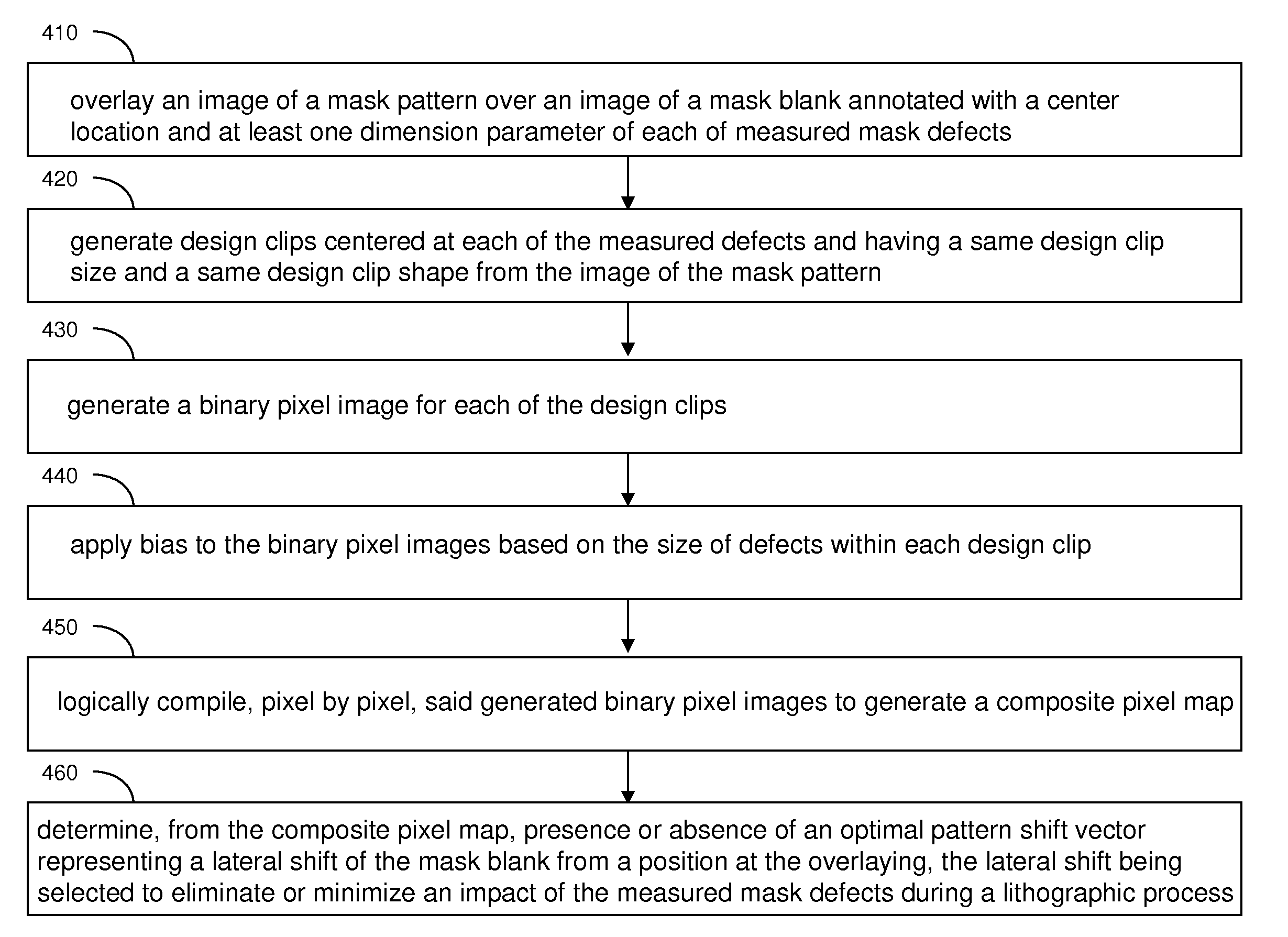Mitigation of mask defects by pattern shifting
a pattern shifting and mask technology, applied in the field of mask defect mitigation by pattern shifting, can solve the problems of nanometer scale differences in optical path length, the inability to manufacture free of defects of mask blank and the complexity of photomasks used in extreme ultraviolet lithography. , to achieve the effect of eliminating or minimizing the impact of measured mask defects
- Summary
- Abstract
- Description
- Claims
- Application Information
AI Technical Summary
Benefits of technology
Problems solved by technology
Method used
Image
Examples
Embodiment Construction
[0047]As stated above, the present disclosure relates to a methodology for a methodology for mitigating mask defects by pattern shifting and a system for implementing the same, which are now described in detail with accompanying figures. Like and corresponding elements mentioned herein and illustrated in the drawings are referred to by like reference numerals. The drawings are not necessarily drawn to scale.
[0048]As used herein, a “design clip” refers to a subset of a design layout for a semiconductor chip that is less than the entirety of the design layout.
[0049]As used herein, a “unit grid dimension” is the unit dimension of a grid employed to design a design layout.
[0050]As used herein, a “node” of a particular dimension, e.g., 65 nm node, 45 nm node, 32 nm node, refers to a technology node employed in semiconductor industry that employs the particular dimension as a nominal dimension for lithographically printable minimum features.
[0051]As used herein, a “defect-hiding” region i...
PUM
 Login to View More
Login to View More Abstract
Description
Claims
Application Information
 Login to View More
Login to View More - R&D
- Intellectual Property
- Life Sciences
- Materials
- Tech Scout
- Unparalleled Data Quality
- Higher Quality Content
- 60% Fewer Hallucinations
Browse by: Latest US Patents, China's latest patents, Technical Efficacy Thesaurus, Application Domain, Technology Topic, Popular Technical Reports.
© 2025 PatSnap. All rights reserved.Legal|Privacy policy|Modern Slavery Act Transparency Statement|Sitemap|About US| Contact US: help@patsnap.com



